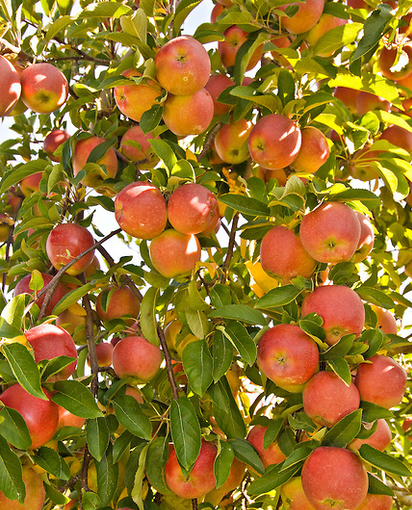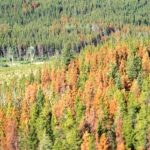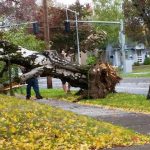Fall Season Care for Fruit Trees
 Fall is the optimal season to look after the health of your trees. Here are our suggestions for looking after your orchard:
Fall is the optimal season to look after the health of your trees. Here are our suggestions for looking after your orchard:
Water well once the leaves have fallen
It is vital that your trees go into the cold Winter with a good moisture supply. But, it’s also important not to encourage new growth just before dormancy and stormy weather. Therefore, it’s best to wait until the leaves have fallen to water. Be sure to saturate the soil thoroughly— at least 2 feet deep– to encourage proper root growth, and continue to do so between rain showers until daytime air temperatures dip below 45 degrees.
Rake fallen leaves
Gather up and remove fallen leaves from underneath your healthy fruit trees. This will help prevent leaf-borne diseases from recurring and reduce the habitat for mice.
Refrain from fertilizing
If you fertilize now, your trees will continue to grow instead of developing the hardiness they need to survive the Winter. During the Fall, only fertilize your fruit trees if they have pale leaves and new growth is weak. If these signs occur, a cup or less of a balanced fertilizer should be enough to help the tree along. It’s best never to fertilize young trees as this will make them take longer to mature and bear fruit.
Wait until Spring for major pruning
Pruning in the late Summer or Autumn may encourage your trees to keep growing. But, in order for them to harden off for the Winter, they need to stop growing for some time. If the trees do not become fully Winter hardy, they can easily be injured in the harsh weather. Go ahead and remove dead or diseased branches, but wait until March for major pruning.
Control insects
If your fruit trees had canker worms or tent caterpillars last Spring, now is the time to prevent a repeat infestation. Canker worms can be prevented by applying tanglefoot to the tree trunk, which will keep moths from reaching the treetop and laying eggs. Look for caterpillar egg bands on the twigs and remove them as necessary.
Don’t let fruit overripen on the tree
When fruit becomes too ripe it is prone to rot and will attract pests, like wasps and racoons. Overripe fruit can also weigh on the tree’s structure and may even result in broken branches.
Take care to protect the branch spurs
When climbing through a tree and harvesting fruit it’s easy to damage the branch spurs– the short twigs that hold the fruit. But, these spurs will produce next years fruit as well, so it’s critical to protect them. Instead of climbing through the tree, use a pole picker or an orchard ladder to pick the fruit.
Protect trees from sunscald
When the sun comes out in late Winter while the roots are still frozen, the sun can actually burn your trees– especially young trees with smooth bark. You can protect them from sunscald by painting or wrapping the lower trunk or installing tree guards.
Check for leaners
If any of your trees are staked, Fall is a good time to make sure they are still vertical and firmly planted. During the growing and harvesting seasons, the weight of the fruit load and picking process can leave you with some “leaners.” These vulnerable trees are likely to fall in a storm, so take the time to correct this by making sure the stakes are solid in the ground, and tightening the lines enough to keep your tree as vertical as possible.
If you’re lucky enough to have productive fruit trees on your property you know what a bounty they can bring (which we realize more and more as the price of an apple rises at the grocery store). The amount of work it takes to care for these trees is certainly well worth it!
We can help you with your fruiting and ornamental trees! Contact us about our pruning, tree removal and stump grinding services today.



